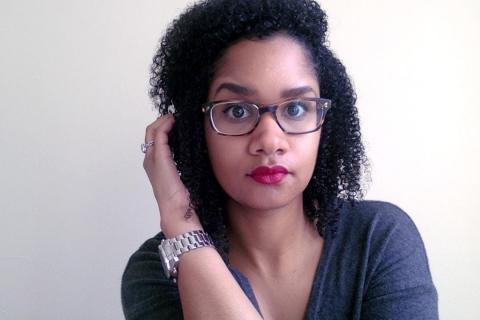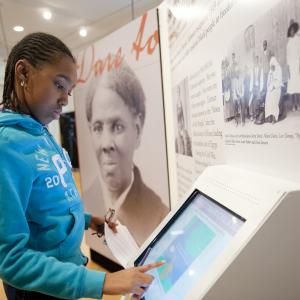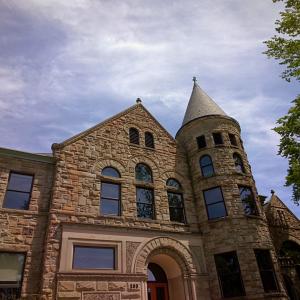
Dawn Araujo-Hawkins (@dawn_cherie), a former Sojourners editorial assistant, is a staff writer for the Global Sisters Report in Kansas City, Mo.
Posts By This Author
Peace Ed.
It wasn't easy, but a small Christian college has introduced a program to study the pursuit of peace.
Almost a decade ago, members of the faculty, administration, and student body at Hope College started a conversation about adding a program of peace studies at the Holland, Mich. campus. Last fall, the process reached an important milestone when the first “introduction to peace studies” course was offered to Hope’s 3,400 students, part of the school’s first ever peace and justice minor.
Administration officials talked about the difficulties in starting any new program at the college level. “First, you have to make a good argument as to why the program is needed at all,” said Alfredo Gonzales, Hope’s dean for international and multicultural education, who took part in those early discussions. “It’s difficult to introduce one more program at a liberal arts institute where there’s just an abundance of programs. In what ways are we going to add a program without adding another burden to our students?”
And that’s just the start of the process.
Once people at Hope decided that a peace and justice curriculum was indeed a good idea, Gonzales said they dove headfirst into logistical questions, such as whether Hope wanted to start with a full-fledged program or if they wanted to introduce it incrementally. Furthermore, they had to figure out which departments ought to be involved in creating such a multidisciplinary effort and what the academic requirements would be.
The process included many conversations among a lot of people, Gonzales told Sojourners, but he said he knew it would be worth it, and that a peace studies program was a natural fit for a school affiliated with the Reformed Church in America. “If we look at our mission statement, it says that Hope College is to educate students for lives of service and leadership in global society,” he said. “So in that framework, this program looks at questions of reconciliation in a world that is deeply torn and is injuring people from the very youngest to the very oldest in ways that we don’t even understand yet.”
Drawing on best practices
In a sense, peace studies is part of Hope College’s legacy: Iconic peace activist A.J. Muste graduated from Hope in 1905. The Dutch-American Muste would go on to be executive director of the Fellowship of Reconciliation—an interfaith peace organization—and to mentor Martin Luther King Jr. In the late ’50s, Muste protested New York City’s civil defense drills alongside Catholic Worker co-founder Dorothy Day, and in 1964, Muste participated in a retreat with a group of renowned peace activists, including Trappist monk Thomas Merton and Jesuit priest Daniel Berrigan.
As an academic field, irenology—the study of peace—is thought to have its formal genesis in mid-20th century Europe with the advent of peace research institutes. In the United States, the first institutions to teach peace were colleges and universities with ties to the historic peace churches: the Mennonites, the Quakers, and the Church of the Brethren.
Welcome to America's Middle East
The Daily Show calls it the 'religious turducken.' Find out why.

Photo via Fettullah OZASLAN / Shutterstock
IN FALL 1884, the congregation that became Temple Israel opened its doors as the first Jewish synagogue in the state of Nebraska. From its inception, Temple Israel was a Reform congregation, a theologically progressive denomination that stresses the social justice imperatives of Judaism. Yet the early members of Temple Israel included not just Reform Jews, but Conservative and Orthodox Jews as well; navigating these interdenominational relationships would prove to be a significant part of the congregation’s early development.
Fast forward 130 years and Temple Israel is one of three houses of worship embarking on a unique interfaith partnership: a single campus in west Omaha that will house a Jewish synagogue, a Muslim mosque, a Christian church, and a fourth building for interfaith fellowship.
Aryeh Azriel, Temple Israel’s senior rabbi, planted the seeds for this project, known as the Tri-Faith Initiative, in 2006 when he reached out to the American Muslim Institute, another local religious community that was looking to construct a new building.
“The original idea started as a result of looking for a partnership in sharing parking lots,” Azriel told Sojourners.
The two communities had forged a relationship in 2001 when, following the Sept. 11 attacks, Azriel led members of Temple Israel in encircling a local mosque to protect it from the Islamophobic attacks they were seeing in the national news.
Syed Mohiuddin, president of the American Muslim Institute, agreed to the partnership; he liked the idea of the two religious groups sharing a parking lot with each other rather than with retail stores or other commercial development. However, it didn’t take long for the two communities to realize the project had greater potential than a shared parking lot. If they could find Christians willing to join them, they could build a shared campus for all three Abrahamic faiths, the first such campus in the world—at least to their knowledge.
Harriet on the $20: It's Complicated

Image via Smithsonian Institution Traveling Exhibition Service/Flickr
Putting Harriet Tubman on the $20 bill isn’t going to fix any of this. But I find it hard to not be excited that a strong black woman is being honored for being a strong black woman. Is a $20 bill an imperfect vehicle for this recognition? Yes. But I’m encouraged by the fact that the U.S. at least wants to appear as if celebrating black people is a normal thing to do.
